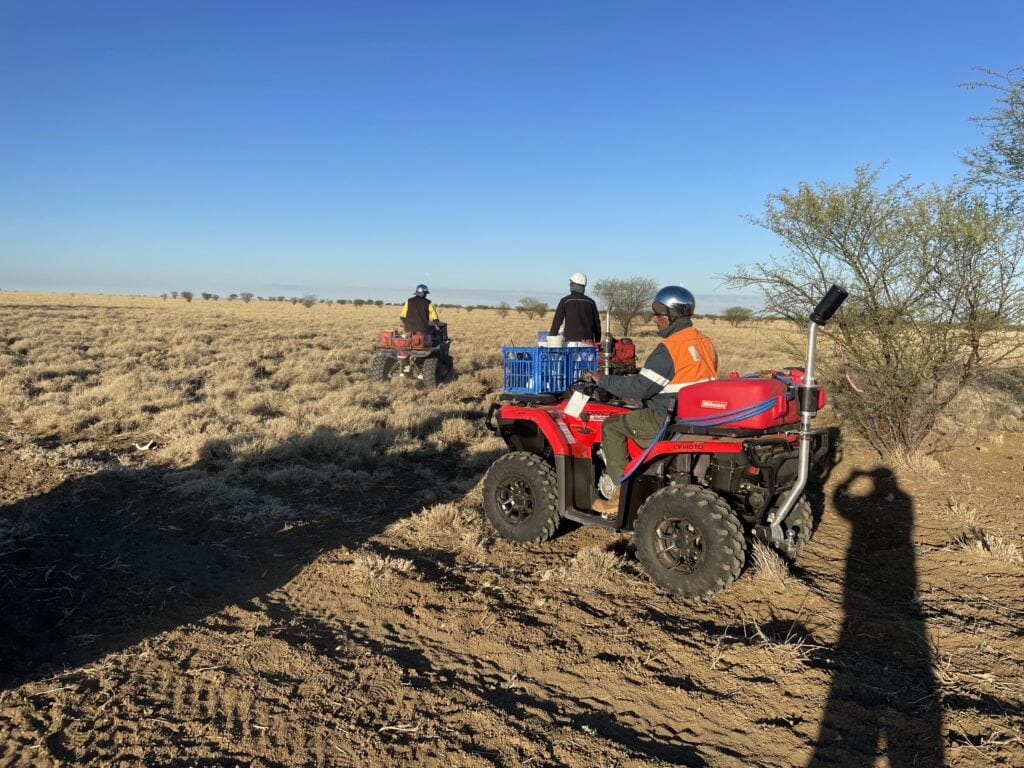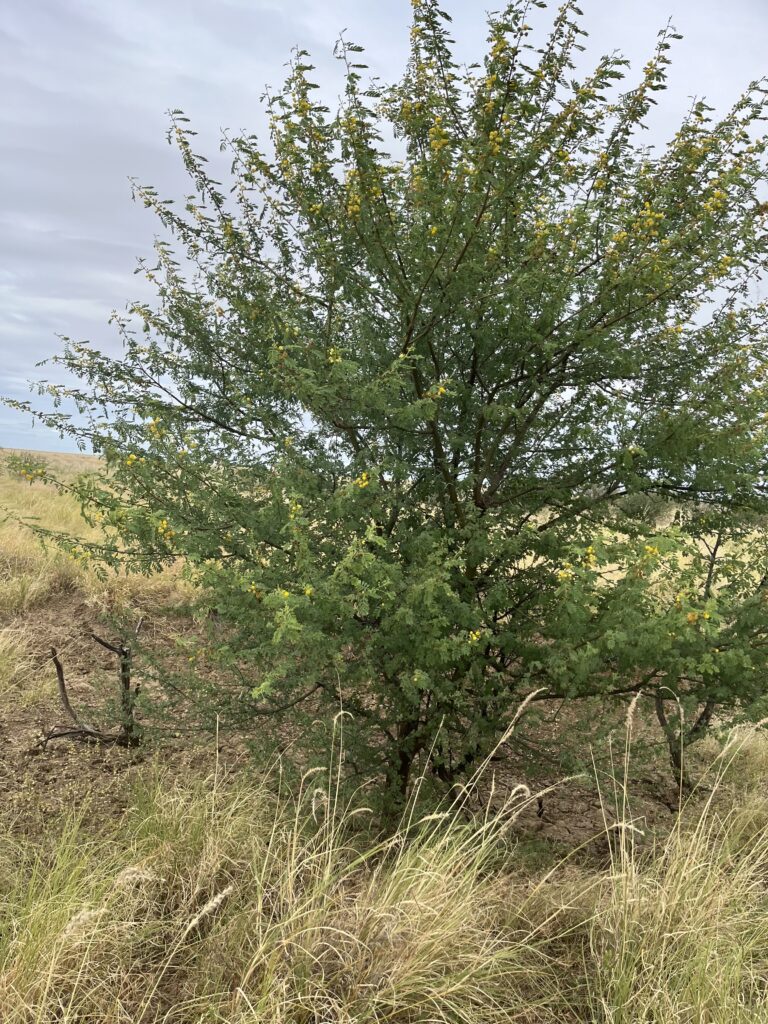Desert Channels Queensland, through federal partnerships, has seen incredible success in controlling one of Australia’s most notorious invasive weeds – prickly acacia.
Prickly acacia infestations were rife following the 2019 Queensland floods, which created perfect conditions for rapid spread and germination of weed seeds.
The 2019 floods thickened weed infestations along waterways, particularly in Upper Thomson and Upper Diamantina catchments.
A catalyst for real change
Since receiving federal funding in 2020, Desert Channels Queensland has worked alongside landowners to provide direct, on-farm treatment across 215,000 hectares of infestation.
Crucially, this project kicked landowners into gear by putting prickly acacia front-of-mind and empowering Desert Channels to work alongside them to see real reductions in weed spread.
In 2015, only 11% of landowners were actively controlling prickly acacia weeds on their properties. Now, 80% (348 landowners) are engaged in control measures.
Desert Channels Queensland’s Project Manager Geoff Penton said collaboration between Commonwealth, NRMs and landowners was vital for achieving these results.
‘We’ve seen a massive increase in participation from landholders, and because of that the weed is now being killed much faster than it can ever reproduce.’
‘Even where we’ve seen some really good seasons like we saw in 2023, the germination of prickly acacia seed has been minimal,’ Mr Penton said.
The Disaster Recovery-funded project has also enabled new innovations, including combining machine learning with drone mapping to automate detection of prickly acacia and partnering with industry to trial a new herbicide for more effective and efficient control.

Desert Channels Queensland works alongside landowners to provide direct, on-farm treatment of prickly acacia.
The importance of ongoing eradication efforts
During its peak in 2015, this Weed of National Significance covered an estimated 23 million hectares of the Desert Channels region at varying densities.
Since then, Desert Channels Queensland has successfully controlled 3 million hectares of prickly acacias – including an 8% infestation reduction between 2015 and 2020.
‘It is a recognition of the fact that when everyone comes together and works collectively together, we can actually achieve amazing things in the results,’ CEO Leanne Kohler said.
In partnership with landholders and the federal government, Desert Channels achieved a further 10% reduction in prickly acacia infestation between 2020 and 2024.
In 2023, Desert Channels’ team was recognised with the prestigious George N. Batianoff Award for Team Excellence for their Prickly Acacia program.
Prickly acacias compete with native Mitchell grass and turn prime pastures for livestock into thorny scrubland, which threatens biodiversity, erodes soils and hinders mustering efforts.
Since 2015, Desert Channels Qld has succeeded in controlling 3 million hectares – but ongoing funding is crucial to keep the tide turning in Australia’s war on prickly acacia.
The Desert Channels Region Prickly Acacia Weed Management Program was funded by the federal government between 2020 and 2024 to identify, reduce and mitigate the risk of prickly acacia spread following the 2019 Queensland floods. Other funding was received from the North Queensland Flood Recovery Project.

Prickly acacias turn pasture into thorny scrubland—threatening biodiversity and hindering mustering efforts.
